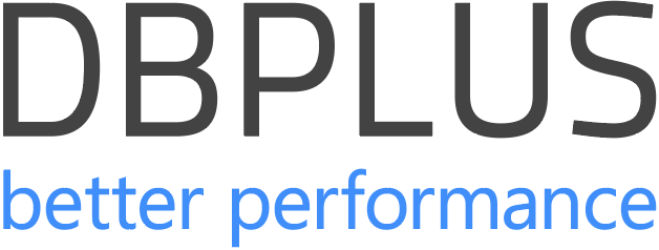For a long time, talk of database supremacy circled around Oracle’s hold on mission-critical workloads. Then Microsoft stepped up with SQL Server, coaxing DBAs away from Unix systems by leaning heavily on a Windows ecosystem that many found simpler to manage. Fast-forward to the present, and the contest has expanded into cloud territory, culminating in an unexpected partnership that underscores just how practical both tech giants have become. How did Microsoft compete with Oracle Database throughout this journey?
A Tale of Two Legacy Overachievers
In the late 1980s, Microsoft licensed Sybase’s technology to create SQL Server for OS/2. By 1993, Windows NT arrived, and SQL Server morphed into a distinctly Windows-centric database. Meanwhile, Oracle—founded in 1977—had already achieved major success in large-scale enterprise deployments on Unix.
- SQL Server on Windows
Microsoft positioned SQL Server as the comfortable next step for anyone already living in a Windows environment. DBAs found that installing and configuring SQL Server didn’t require steep Unix knowledge, and the arrival of .NET in the early 2000s provided a cohesive framework. Tools like SQL Server Management Studio gave a user-friendly path for day-to-day tasks. - Oracle’s Unix/Linux Edge
Oracle continued as the big name in mission-critical, high-concurrency setups, especially on Unix. Banking, telecoms, and government agencies tended to trust Oracle for near-zero downtime. As Linux momentum picked up in the ’90s, Oracle expanded there as well, doubling down on clustering features. How did Microsoft compete with Oracle Database in those high-stakes environments? Primarily by offering a simpler, more budget-friendly alternative for many shops, though Oracle remained dominant for massive concurrency on Unix.
Microsoft’s Key Competitive Tactics
Microsoft focused on more than just a standalone database. By coupling SQL Server with Windows Server and, later, Azure, it eliminated much of the complexity Oracle’s Unix-based systems presented. Licensing felt clearer—no surprise fees—compared to Oracle’s infamous labyrinth. And if your devs used .NET, hooking up SQL Server barely required a second thought.
How did Microsoft compete with Oracle Database? By offering an all-in-one experience that resonated with cost-conscious Windows shops.
Integrated Ecosystem
SQL Server coupled with Windows Server was the first step, but things accelerated once Azure came along. If you were used to .NET or had servers humming on Windows, Microsoft made it downright simple to plug into the database layer. That one-stop-shop approach often sealed the deal for organizations wanting minimal fuss—how did Microsoft compete with Oracle Database on ease of adoption? By removing friction for DBAs who preferred not to juggle Unix and Windows skill sets at once.
Licensing & Cost
Microsoft’s licensing was historically more transparent—if you already licensed Windows or used Azure, you likely got SQL Server at a favorable rate. Oracle, by contrast, built a reputation for more complex licensing that could catch DBAs off-guard, particularly with costs ballooning under high CPU usage. Not that Microsoft was cheap, but the path to “figuring out the bill” felt less like an expedition into fine print. This was a major piece of how did Microsoft compete with Oracle Database—leveraging simpler license terms to woo budget-conscious enterprises.
Developer-Friendly Tools
A lot of DBAs double as in-house experts for whatever language stack is popular, and for those using .NET and Visual Studio, SQL Server integrated seamlessly. You wrote your code in Visual Studio, deployed to SQL Server, and didn’t worry much about compatibility. Oracle, with its Java-based heritage, can be just as powerful—but for devs raised in the Windows environment, the Microsoft pipeline presented fewer friction points.
Meanwhile, Oracle’s Enterprise-Grade Strengths
While Microsoft scored points with cost and convenience, Oracle remained objectively better in several areas:
- Massive Scale and Reliability
Oracle earned its reputation by powering mission-critical systems, such as global financial networks. With advanced clustering and replication, it rarely blinked under sky-high transaction volumes, a boon for DBAs who prioritize near-zero downtime. - Cross-Platform Flexibility
Oracle runs natively on Unix, Linux, and Windows, letting DBAs choose hardware and OS combos. For truly heterogeneous environments, Oracle’s approach often felt more robust. - Rich Feature Set
Over the years, Oracle introduced partitioning, automated tuning advisors, advanced security, and in-depth auditing—crucial for large-scale, intricate deployments where you can’t just rework the schema from scratch. - In-Depth Analytics and Extensions
From built-in machine learning to data warehousing hardware like Exadata, Oracle’s specialized technology tackled complex queries at scale. For any organization that needed lightning-fast analytics, Oracle’s not-cheap but highly engineered stack did the trick. - Legacy Momentum
Oracle’s long-standing enterprise presence made it deeply entrenched in industries like finance, telecoms, and government. DBAs often trusted Oracle implicitly for robust documentation and a vast community of skilled professionals.
Shift to the Cloud
Once enterprises tired of on-prem overhead, Microsoft gained a foothold with Azure SQL Database, giving it a lead in cloud-based relational services. Oracle’s later entry made it hustle to stand out—eventually leading both companies to collaborate in surprising ways.
Azure SQL vs. Oracle Cloud
The gravitational pull toward cloud computing ramped up around the late 2000s. In 2009, Microsoft introduced SQL Azure (later renamed Azure SQL Database), letting DBAs shift from on-prem tasks like patching to a managed service. Oracle launched Oracle Cloud Infrastructure (OCI) around 2016, hoping to translate its database dominance into the cloud. How did Microsoft compete with Oracle Database in this new domain? Primarily by capitalizing on its earlier start with Azure. Many Windows-based enterprises found Azure a natural extension of their existing software environment. OCI brought Oracle’s formidable database tech to the cloud but arrived later, facing fiercer competition for mindshare.
Multi-Cloud Collaboration
Then the script flipped in a way few predicted. In 2023, Oracle and Microsoft deepened a partnership to run Oracle Database services within Azure data centers (Oracle Database@Azure). Ironically, Microsoft—once purely a rival—became one of Oracle’s largest customers by ordering Oracle Cloud racks to sit inside Azure. For DBAs, that means you can run Oracle-based workloads in an Azure environment while still benefiting from Oracle’s high-end database features. It underscores how multi-cloud realities can blur vendor lines: sometimes your biggest competitor is also your biggest ally.
Adoption Rates and Market Share
- Azure: As of Q4 of 2024, Microsoft held around 20%of the global cloud infrastructure share, second only to AWS. Azure SQL Database has benefited from the larger Azure platform and from Microsoft’s legacy enterprise deals—turning Windows-based shops into cloud customers with relative ease.
- Oracle Cloud: Oracle’s share in Q3 of 2024 stood at 3% but has grown notably in the last couple of years, partly due to its Autonomous Database capabilities. Oracle aims to lure existing on-prem Oracle users to OCI. Nevertheless, in many accounts, the question of how did Microsoft compete with Oracle Database in the cloud often comes down to Azure’s earlier arrival and broader ecosystem.



